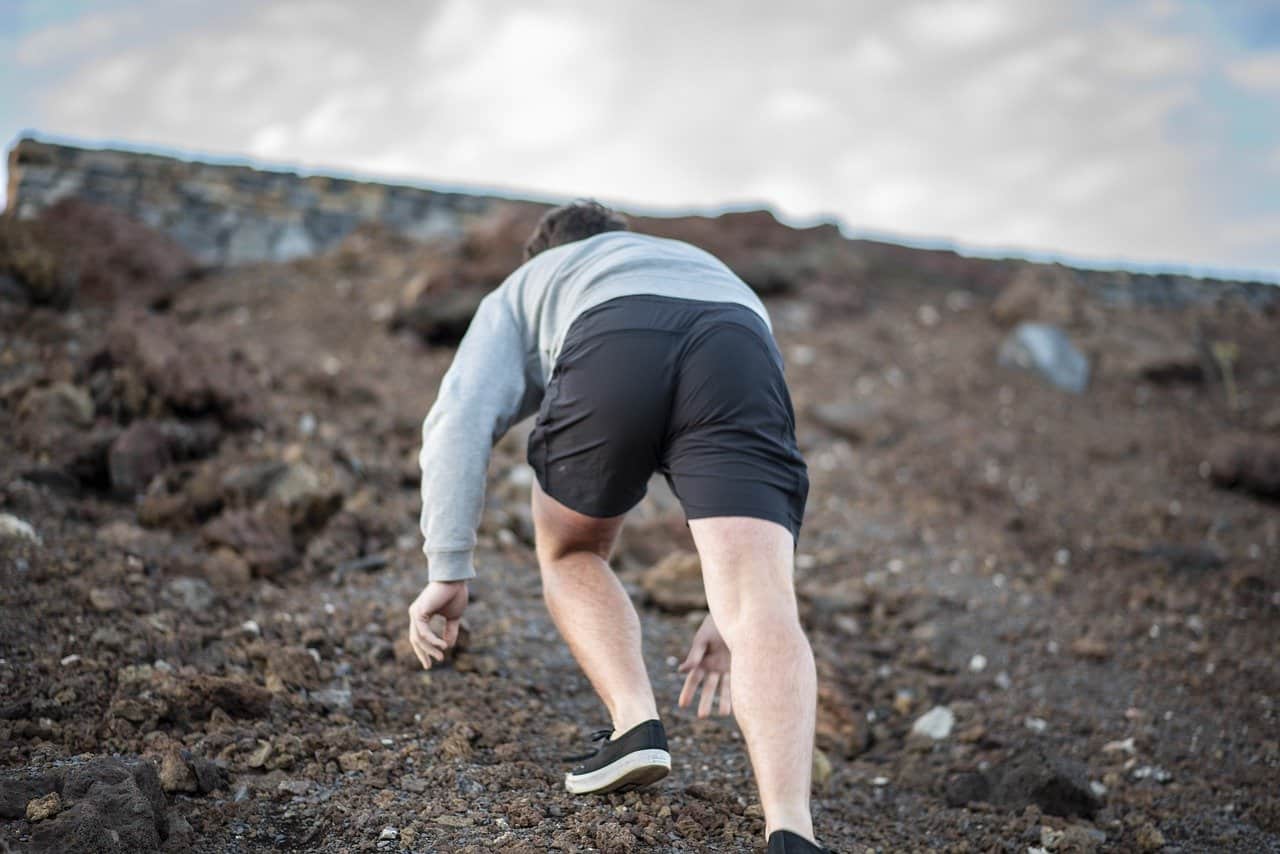Fear of Hiking Uphill: 5 Ways To Overcome Climacophobia

There’s so much to love and enjoy about the great outdoors when you’re out on a hike. There’s epic scenery, crisp mountain air, and fascinating wildlife to encounter. But for many people, the fear of hiking uphill can sometimes ruin their chances to experience that natural wonder.
For those new to hiking, there’s probably been a time when you experienced a hill that put you out of your comfort zone. Maybe you’re climbing up the side of a mountain where the pathways are narrow, and the drop-off is rather sharp. Or perhaps you’re hiking up a super steep mountain where you need climbing gear to help get you to the top. Even for the most experienced climbers, this can be a scary thing and can trigger a lot of fear.
Quick Links
What Is Climacophobia
Sometimes, a fear of hiking uphill can be more than just a slight apprehension of heights. Climacophobia is known as the fear of climbing, and it can refer to any kind of climbing, not just climbing up hills. It can refer to the fear of climbing up a ladder, a rock wall, and even flights of stairs.
If you have climacophobia, chances are you don’t like climbing anything, period — especially higher risk climbing areas such as mountains. If you think you might have climacophobia, you may have had a negative experience in the past that has led to you having such a severe fear of climbing. Maybe you’ve fallen down a flight of stairs in the past, have had difficulty completing a climb, or even had a panic attack while climbing.
Although these experiences can be typical in people with climacophobia, they don’t necessarily need to be personally experienced for you to develop the fear. Some people develop climacophobia after witnessing these events either in person or on film and television.
Fear of Climbing vs Fear of Heights
Like climacophobia, acrophobia is characterized as an intense or irrational fear of heights, which is not exactly helpful if you’re looking to make an uphill hike.
It’s natural for one to experience a certain amount of discomfort and caution around significant heights.
However, if you have acrophobia, the fear can be debilitating to the point where you avoid any activity that involves being in high places.
Fear of Hiking Uphill vs Fear of Hiking Downhill
While both the fear of hiking uphill and the fear of hiking downhill can be scary, they’re actually quite different.
For starters, the fear of hiking uphill is typically related to heights and a fear of falling. This type of fear often stems from a lack of experience or knowledge about hiking in general. People with this fear may feel like they’re in danger of slipping and falling the whole time they’re hiking.
The fear of hiking downhill, on the other hand, is often caused by a fear of injury. This can be from potential trips and slips that may occur while hiking or even after falling down a hill. People with this fear may also feel like they’re in danger of being injured from potential falls. The fear of steep slopes is called Bathmophobia.
How to Get Rid of Your Fear of Hiking Uphill
Now that we’ve identified what your specific fear might be, it’s time to start getting over it. And thankfully, there are a few ways to do this.
1. Start Small
If you’re new to hiking, start by hiking smaller hills at first. This way, you can slowly ease your way into the activity without feeling overwhelmed. As you become more comfortable with hiking smaller hills, you can gradually work your way up to bigger ones.
2. First, You Should Prepare Adequately
Mountain climbing is a great day adventure, but it should never be an adventure that is taken spontaneously. Climbing up steep mountains is something that requires a good deal of forethought and preparation, especially if you’re planning on hiking alone. It would be an absolute shame if you become too exhausted or, worse, injured during your hike because you didn’t fully assess what you would need and how your body would fare. Be realistic about your skills as a hiker and your fitness level.
3. Take Time to Research Your Trails
Always take time to research the trails you want to take. You can check trail reports from other hikers and see what you need to do to complete your hike as safely as possible. Examine what materials you might need. Should you pack a tent? Does the trail you’re taking cover a variety of altitudes? Are there any streams you would have to cross? These are just some questions to consider when deciding which hiking route is best for your skill level.
4. Consider Using Trekking Poles
Hiking uphill at high altitudes can make you feel on edge, especially when you suffer from specific anxieties such as climacophobia and acrophobia. To alleviate some of the anxieties that come with hiking at significant altitudes, consider investing in a good pair of trekking poles to feel more confident. They will make you feel more confident in hiking uphill, and will also help you keep your balance and give you more stability.
5. Analyze Any Potential Danger
There always tend to be several real risks that you need to consider when planning to hike uphill. Analyzing these potential threats could help alleviate some of the anxiety of hiking at higher altitudes. In addition to having a fear of losing your stability at certain heights, maybe you’re also concerned about coming across poison ivy. In that case, you should research your trail to see if coming across the plant is a possibility. You should think of any fear you might have as a statistical probability of occurrence.
Conclusion
If you’re somebody who has anxieties about hiking uphill, we hope you’ll take some of this advice into consideration. If you do take our advice, you could be set on conquering your fears and taking full advantage of the beauty and natural splendor you’ll experience on your hike.






